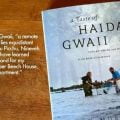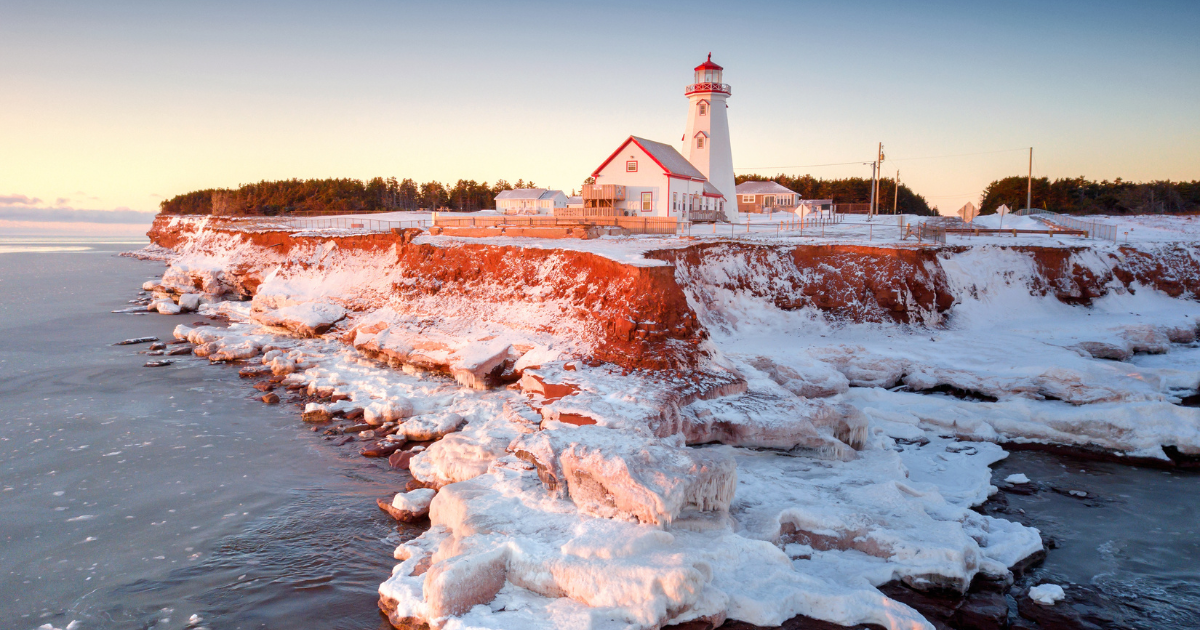There is a gentle rocking to the kayak as it is pushed along by the tidal forces. I rest my paddle, lean back, turn my face to the sun and close my eyes. I want to remember the smells, the feeling of deep solitude and the incredible life force of the landscape that I have been enveloped in. It is the final day of our sea kayaking trip in Haida Gwaii, and I am already plotting my return.
Haida Gwaii captured my imagination as a wide-eyed child spellbound by images of mysterious, weather-beaten totem poles shrouded in mist. My siblings and I grew up near the Six Nations reservation in southern Ontario. My mother wanted us to experience First Nations culture, so she took us to annual pow wows and introduced us to the poetry of Pauline Johnson. Years later, after I migrated west, a growing passion for multi-day trips in both canoes and kayaks, and stories and images of Haida Gwaii continued to whisper my name. The allure of tall trees and cold seas, a place some call the Galapagos of the North, was simply too tempting to resist.
Geography 101
Over 100 km (62 miles) from mainland British Columbia, Haida Gwaii is actually closer to Alaska than mainland B.C. and makes up the southern tip of the Alaskan Panhandle. (Formerly known as the Queen Charlotte Islands, the archipelago was officially “renamed” Haida Gwaii in 2010.) It’s a fairy-tale land full of rich culture, ancient forests and abundant marine life. To provide scale, this archipelago of roughly 150 islands covers over 10,000 square kilometres (3,861 square miles); that’s smaller than Vancouver Island but bigger than Prince Edward Island. These islands boast over 1,600 km (994 miles) of shoreline, from quiet coves and pebble beaches to rocky, wild, wind-blasted shores that rise up to towering old-growth rainforests. A stone’s throw from the ocean is one of the rarest ecosystems in the world—a virgin temperate rainforest, one of the most intact in all of North America. The noble giants of the island are the majestic Sitka spruce, hemlock, Douglas fir and western red cedar trees that rise up from a mossy carpet of forest floor. These are some of the largest living trees left on the planet.
My husband, Mark, and I started to plot our adventure on a cold winter night. We are both leery of group travel and usually opt for more independent trips. the thought of navigating open ocean, fog, potentially big waves and strong currents, however, made us lean toward the safety of a guided trip. In these waters, hypothermia can set in within 20 minutes. And what would we do if a pod of orcas or a curious humpback whale suddenly appeared by our boats? Thankfully, we have some like-minded paddling friends who were game for the adventure, and we were able to organize a private trip with a local outfitter, Green Coast Kayaking.
Unplanned sea planes
While not in the intended budget, an unfortunate travel bumble (on behalf of the writer) resulted in our crew arriving at our launching point via float plane. We had initially dismissed the idea because of the extra cost, but weather and trip logistics dictated the decision, and we started our journey on a low-level scenic flight over the islands, spotting several pods of porpoises along the way. Our seasoned pilot even noticed a giant mola (a.k.a. ocean sunfish) sunbathing on the surface of the water and circled down for us to have a closer look. They are the world’s largest bony fish and can weigh up to 2.5 tonnes (the size of a small pickup truck)! After a glorious hour enjoying a bird’s-eye view, we glided toward the water and our pilot touched down. We were greeted by our enthusiastic guides and a raccoon scouring the beach for shellfish.
Once we unloaded the sea plane and watched it taxi off to another expedition farther north, we started organizing a mountain of brightly coloured dry bags and assorted gear into the tiny holds of the kayaks. A curious harbour seal did a few laps in front of the pebble beach, supervising our work. Although we were used to packing waterproof barrels and 30- to 40-litre (eight to 11 gallon) dry bags for canoe trips, we were advised to use as many 10-litre (2.6 gallon) bags as possible, forewarned that 20-litre(five gallon) bags would fit in the holds but would feel like wrestling a greased pig. Not wanting anything to get left behind, I asked the guides if we should hold the plane in case we needed to send back any extra gear, but they assured us it would fit. Shockingly, after an hour of grunting, sweating and stuffing, we had the kayaks tightly packed. We donned our neoprene skirts (to fit over the holds of the kayaks to keep the water out), and off we went. Within hours, we had spotted multiple bald eagles, kingfishers and off-shore water spouts, which reminded us that whales could make an appearance at any time.
After a few hours of comfortable paddling, we arrived at our first campsite and reversed the morning’s efforts by unpacking the kayaks and setting up camp. The guides made quick work of assembling the backcountry kitchen and building a fire from driftwood to get the kettle on for a hot drink. A lone bald eagle perched in a nearby tree, watching our progress. We made a group effort to gather more firewood, and then we were left to explore the green jungle behind our camp.
Green Coast Kayaking caters to the less pampered guests who are willing to help out around camp and take turns preparing meals. Mark was head chef for the first evening, and I was his sous.We were pleasantly surprised to find that the “kitchen” was well stocked, and while a backcountry chef must be innovative at times, the meals for the week were hearty and plentiful, and one could never complain about the view. With full bellies, bodies warm from the campfire and mugs of hot cocoa, we crawled into our tent and hit our ultimate reset button: being off-grid.
Breakfast with the birds
Day 2 began with cowboy coffee, hot oatmeal and stewed cinnamon apples. The bald eagle from the previous day had resumed his lofty post, and a Sitka deer was wandering the beach, munching on sea kelp. In our first hour of paddling, a large black figure on the far shore caught our eye. As we paddled closer, we saw that it was a bear walking the beach at low tide, investigating tide pools for easy snacks. The black bears on Haida Gwaii are some of the largest in the world thanks to their rich diet. Each fall, the salmon run at over 50 different spawning streams. As we continued paddling, Mother Nature continued her show, and out of the mist emerged a pair of endangered sandhill cranes. Not surprising, with over 300 species, the bird life numbers over a million during peak season, as the islands are a prime stopover for migrating seabirds on the great Pacific flyway. The magnificent albatross, peregrine falcons, trumpeter swans, great blue herons and tufted puffins have layovers here. Perhaps the most majestic (and most at home) in this landscape is the bald eagle. With just over one nest per square kilometre, Haida Gwaii has one of the highest concentrations of bald eagles in all of North America.
Of Watchmen and ravens
The weather finally settled for us to make the open ocean crossing to see the fabled totems on Day 5. SGang Gwaay Llnangaay is in Gwaii Haanas National Park Reserve, Marine Conservation Area Reserve and Haida Heritage Site. Known for having the world’s largest array of totem poles, the village is a UNESCO World Heritage Site. Although it is but one of 400 archaeological Haida sites on the islands, very few poles remain standing.One of the archipelago’s largest villages, Sgang Gwaay was home to roughly 300 Haida people for over 2,000 years. It was occupied until about 1880, when the population was wiped out by a small pox epidemic and wars with the Europeans following the fur trade. Access to the island is strictly controlled to 12 visitors at a time. As a kayaking group, we had to radio ahead to ask permission to land, and upon arrival, we were greeted by a Watchman. Traditionally, Watchmen were responsible for keeping their villages safe and were posted at strategic points around the island to watch for invaders from enemy tribes. Now the guardian role is an honoured summer position, and the Watchman work at one of five historic village sites, taking visitors on rich cultural tours. Our guide slowly walked us through the dense forest to the village site, where 26 poles remain, as well as the mossy remnants of over 20 cedar long houses.Other totem poles have been moved to the Royal BC Museum of Natural History in Victoria and the Haida Heritage Centre in Skidegate for further preservation.
Our guide explains the legends and unique history that have been carved into each pole, which feature various animals, supernatural beings, the stories of natural phenomena and, on the memorial poles, family crests. Some of the poles have started to disintegrate from the top down. Our guide shares with us that these are the mortuary poles to honour the dead, and the top was where the bentwood boxes held the remains of important chiefs, warriors and distinguished members of their tribe. The pathways between the poles are marked by seashells, and she laments the endless work of having to “tidy” the seashells each day. She shakes her head at the pesky ravens who swoop down and rearrange her intended handiwork. As if on cue, a large raven lets out a squawk from a nearby perch and our Watchman gives us a exasperated look.
Fried egg… jellyfish
We spotted fried egg jellyfish and lion’s mane jellyfish, as well as a rather large male Steller sea lion who came in for a closer inspection of our kayaks. Though we had already seen them offshore from the beach doing swim-bys and barking at our campsite, I held my breath as he got a little too close for comfort.
While visitors can arrange for travel by small boats, Zodiacs and float planes to visit Gwaii Haanas, the simplicity of paddle power brings you closer to the ancient civilizations that existed before convenience travel.The Haida were known for their stamina in paddling in heavy seas and their skill in maneuvering their cedar canoes. They were often out of sight from land for days without navigational aids.Pacific storm systems and tidal currents can build offshore waves up to 35 metres (115 feet), with wind gusts up to 160 kph (99 mph). (Haida Gwaii has the highest average annual wind speed in Canada.) The canoes were prized for their craftsmanship, size and seaworthiness. Larger canoes were up to 22 metres (72 feet) long, could fit up to 40 people and hold 2 tonnes of provisions. The Haida regularly travelled as far as Victoria and Puget Sound, and many have claimed to have gone as far away as Hawaii, Fiji, New Zealand and Easter Island.
Flapjacks and sleep mode
I woke up with a heavy heart on our last day, knowing that our expedition was over but that I would return. Our guides treated us to apple flapjacks, and we polished off the last of the Baileys in our coffee. Our kayaks were in “sleep mode,” as we were escorted back to Moresby Camp via Zodiac.
Today, an effort is being made to revive the Haida language. Translations as to the meaning of Haida Gwaii varies from “Islands of the People” to “Place of Beauty” to “Place of Wonder.” While the debate may continue on the exact translation, all seem wholly accurate. At the beginning of the trip, having told us it was a great privilege to be able to visit Gwaii Haanas, our guide shared a Haida saying, “Gina waadluxan gud ad kwaagiida” (“Everything depends on everything else”).
At the end of our week, the spirit of the islands and the complex interplay of the delicate ecosystems made the depth of this statement more clear. It was an enchanting week, and though I was sad to be packing up my dry bags one last time, it was a great privilege to travel gently in such a sacred landscape.
Kiley Torti is a health and fitness professional living in Banff, Alberta. She is an Ontario refugee who is happiest when wandering through the backcountry in pursuit of a Rocky Mountain high. Hiking, biking, or skiing, she is always on the lookout for new adventures in far-flung places on her extended backyard.





















